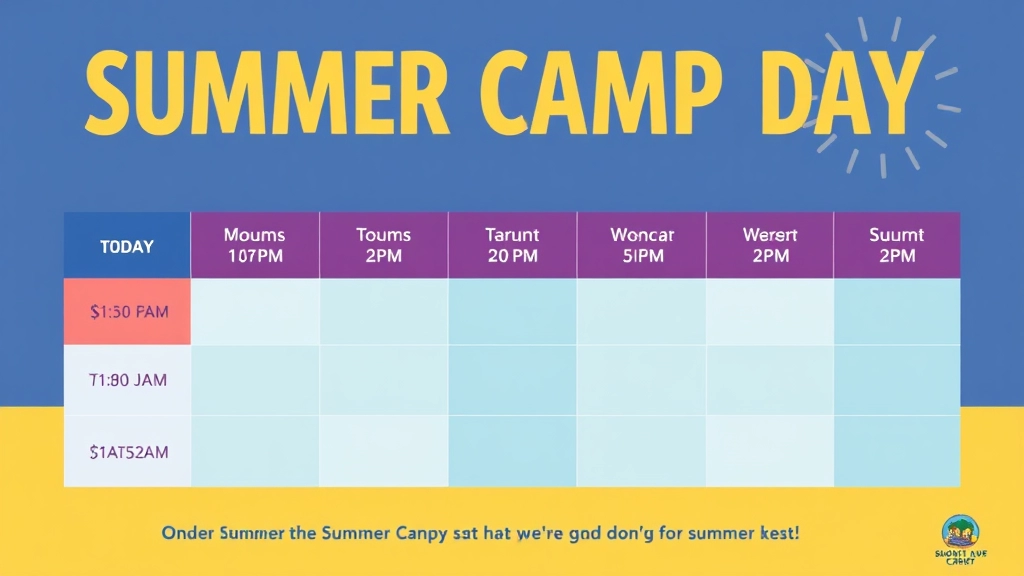Welcome to the Ultimate Guide on Crafting the Perfect Summer Camp Day Schedule!
Imagine a day filled with laughter, learning, and endless adventure. As a camp organizer, I’ve seen firsthand how a well-structured schedule can transform a simple day into an unforgettable experience for every camper. From morning arrivals to afternoon educational sessions, and finally to the end-of-day reflections, each part of the schedule is meticulously designed to keep the energy high and the spirits higher.
Key Segments of the Day
In this article, we’ll break down the day into key segments:
- Morning Physical Activities: Sports and outdoor games
- Creative Workshops: Spark imagination
- Structured Team Challenges: Build camaraderie
- And much more!
We’ll also delve into the importance of mid-morning and mid-afternoon snacks to keep those energy levels up. Whether you’re a parent curious about what your child will be doing all day or a fellow camp organizer looking for tips, this guide has got you covered.
Let’s Dive In!
Explore how to make every camp day a smashing success!
Morning Arrival and Welcome Activities
Morning Arrival and Welcome Activities are where the magic starts. You know, that moment when parents drop off their kids, and everyone’s got a mix of excitement and nerves? Yeah, that’s our sweet spot. We’ve all been there, right? Wondering if the kids will have fun, make friends, or just feel out of place. Let’s dive into how we make that first hour a blast and set the tone for an unforgettable day.
Setting the Scene: A Warm Welcome
When the campers arrive, the first thing they need is a friendly face. We’ve got staff members ready to greet them with big smiles and high-fives. It’s like rolling out the red carpet but without the fuss. Here’s what we focus on:
- Personal Greetings: Each camper gets a personal welcome. We call them by name, make eye contact, and give a genuine smile. It’s all about making them feel seen and valued.
- Name Tags: This isn’t just for the kids; it’s for us too. Name tags help everyone get acquainted faster. Plus, it’s a lifesaver for those of us who are terrible with names.
- Ice-Breaker Games: Simple games like “Two Truths and a Lie” or “Human Knot” get everyone involved and laughing. It’s a quick way to break down barriers and get the kids interacting.
Engaging Welcome Activities
Now, let’s talk about the activities. We want to kick off the day with something that grabs their attention and gets them moving. Here’s what we usually do:
- Interactive Stations: We set up different stations with activities like face painting, temporary tattoos, and balloon animals. Kids can choose what interests them, which gives them a sense of control right from the start.
- Music and Dance: A little music can go a long way. We have a playlist of upbeat, kid-friendly songs that get everyone in a good mood. Sometimes, we even throw in a quick dance-off. It’s silly, it’s fun, and it works.
- Quick Crafts: Simple crafts like friendship bracelets or decorating name tags are a hit. They’re easy to do and give the kids something to show off later.
Addressing Common Concerns
Parents and kids have worries, and we get it. Here’s how we tackle some of the most common concerns:
- Safety First: Parents want to know their kids are safe. We have a well-organised check-in process, and our staff is trained to handle emergencies. We make sure parents know this upfront.
- Making Friends: Kids worry about fitting in. Our ice-breaker games and interactive stations are designed to get everyone mingling. By the time the first hour is up, they’ve already made a few friends.
- Feeling Overwhelmed: Some kids might feel overwhelmed by all the new faces and activities. We keep an eye out for anyone who looks lost or anxious and pair them up with a buddy or staff member to help them settle in.
Wrapping Up the Welcome
By the end of the welcome activities, the goal is simple: every camper should feel excited and ready to dive into the day’s adventures. We want them to feel like they belong here, like this is their place. And trust me, when you see those smiles and hear the laughter, you know you’ve hit the mark.
Grouping Campers by Age and Activity Interests
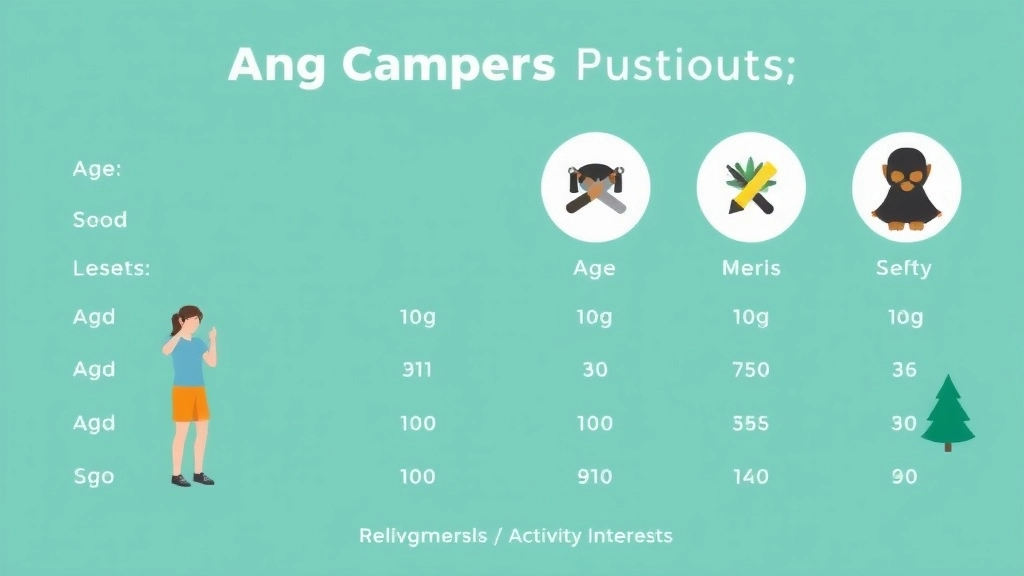
Alright, let’s dive in.
Grouping campers by age and activity interests is crucial for a smooth camp experience.
Why?
Because no one wants a 6-year-old feeling left out in a group of 12-year-olds.
Or a kid who loves arts and crafts stuck playing football all day.
So how do we make sure everyone’s happy and engaged?
Start with Age Groups
First off, split the campers by age.
- 6-8 years
- 9-11 years
- 12-14 years
This keeps things fair and balanced.
Young kids get simpler activities.
Older kids get more challenging stuff.
Activity Interests
Next, find out what they love doing.
- Sports
- Arts and Crafts
- Drama
- Music
We can do this through a quick survey on the first day.
Or better yet, ask parents when they sign up.
Mixing It Up
Now, mix age groups with interests.
For example:
- 6-8 years who love sports
- 9-11 years into arts and crafts
- 12-14 years keen on drama
This way, every camper gets to do what they enjoy most.
Flexibility is Key
Remember, flexibility is key.
Kids change their minds.
One day they might love painting, the next they want to play football.
So, keep options open.
Allow them to switch groups if they want.
Real Stories
Last summer, we had a camper named Tom.
Tom was 10 and loved drama.
But his initial group was more into sports.
He felt out of place.
We quickly moved him to the drama group.
And guess what?
He thrived.
He even got a lead role in the camp play.
Why It Matters
Grouping by age and interest isn’t just about keeping kids busy.
It’s about making sure they have fun.
Feel included.
And create memories they’ll cherish.
Quick Recap
- Split by age: 6-8, 9-11, 12-14.
- Identify interests: sports, arts, drama, music.
- Mix age groups with interests.
- Be flexible: allow group switching.
There you have it.
Grouping campers by age and activity interests is a game-changer.
Morning Physical Activities (Sports, Outdoor Games)
Alright, let’s dive into the nitty-gritty of morning physical activities. Why is this part of the day so crucial for our campers? Well, think about it. How often do kids these days get a chance to run around and just be kids? Not enough, right? That’s why we kick off the day with sports and outdoor games.
Why Morning Physical Activities Matter
We all know that getting kids moving is essential, but why do it first thing in the morning? Here’s why:
- Energy Boost: Kids are naturally energetic, but a good run-around can channel that energy positively.
- Focus: Physical activities help improve concentration and focus, setting the tone for the rest of the day.
- Social Skills: Sports and games are fantastic for teaching teamwork, cooperation, and communication.
Types of Morning Physical Activities
We’ve got a mix of sports and outdoor games to keep things fresh and exciting. Here’s a peek at what we offer:
- Team Sports: Football, basketball, and cricket. These are not just fun but also teach kids the value of teamwork.
- Individual Sports: Think tennis, badminton, and athletics. Great for building self-discipline and individual achievement.
- Outdoor Games: Capture the flag, tag, and relay races. These games are perfect for letting loose and having fun.
How We Group Campers
Grouping campers by age and interest is key. We want everyone to have a blast and learn something new. Here’s how we do it:
- Age Groups: Younger kids (5-8), middle group (9-12), and teens (13-16). This ensures that the activities are age-appropriate.
- Interest-Based Groups: Some kids love sports, others prefer games. We cater to both, making sure no one feels left out.
Real Stories, Real Fun
Let me share a quick story. Last summer, we had a camper named Jake. Jake wasn’t into sports at all. He was more of a bookworm. But after a few days of playing football with his group, he started to look forward to the morning activities. By the end of the camp, he was one of the star players. That’s the magic of getting kids involved in physical activities.
Tips for Parents
Parents, here’s how you can make the most of our morning physical activities:
Mid-Morning Snack and Socialising Break
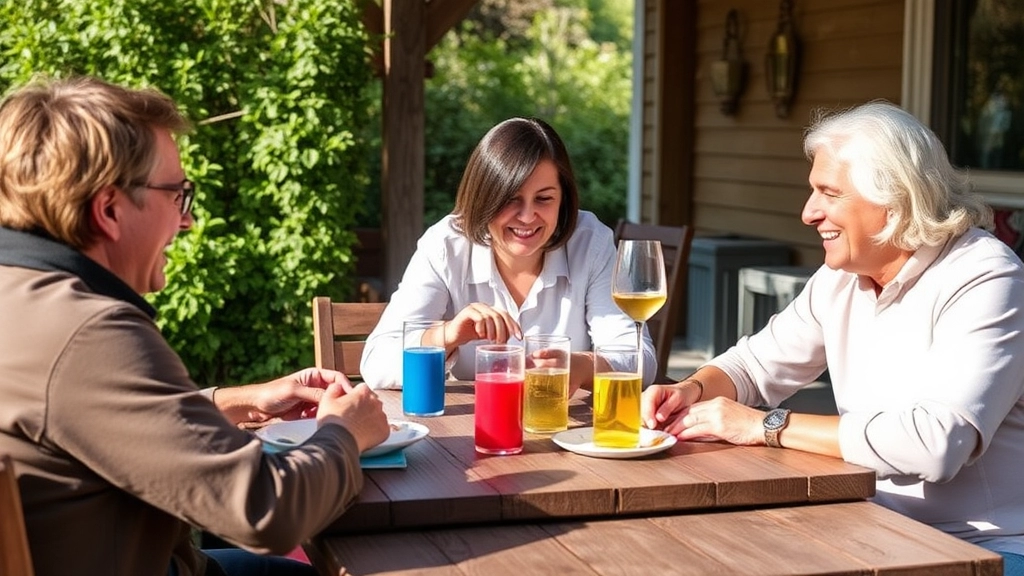
Ever noticed how kids get cranky when they’re hungry?
Yeah, me too.
That’s why the mid-morning snack is a game-changer.
Why a Mid-Morning Snack Matters
Kids burn a ton of energy during morning activities.
By mid-morning, their energy levels dip.
A snack break isn’t just about food; it’s about recharging.
What Makes a Good Snack?
Think of snacks that are:
- Nutritious
- Easy to eat
- Kid-friendly
Fruits, nuts, and whole-grain bars are great options.
Avoid sugary snacks; they lead to energy crashes.
Socialising: The Secret Sauce
This break isn’t just for munching.
It’s a golden opportunity for kids to socialise.
They can chat, make new friends, and build connections.
How to Make It Fun
You want to keep it engaging.
Here are a few tips:
- Set up snack stations: Different types of snacks at different spots.
- Interactive games: Simple games that kids can play while eating.
- Music: Light background music to set a relaxed mood.
Real-Life Example
I remember this one camp where we introduced a “Snack and Chat” circle.
Kids loved it.
They’d grab their snacks and sit in a circle, sharing stories.
It was a hit.
Keep It Fresh
Rotate the snack options daily.
One day it’s fruit skewers.
The next, it’s trail mix.
Keeps the excitement alive.
Creative Workshops (Arts and Crafts, Music, Drama)
Ever wondered how to keep kids engaged and excited during camp? Well, creative workshops are the secret sauce. These activities aren’t just about passing time; they’re about sparking imagination and letting kids explore their talents. Let’s dive into how we make this happen.
Why Creative Workshops Matter
First off, why even bother with creative workshops? Aren’t kids just here to run around and burn energy? Sure, but there’s more to it. Creative workshops:
- Boost Confidence: Kids get to create something unique, which builds self-esteem.
- Enhance Social Skills: Working on projects together teaches teamwork.
- Stimulate Imagination: Whether it’s painting or acting, creativity knows no bounds.
Types of Creative Workshops
We offer a variety of creative workshops to cater to different interests. Here’s a breakdown:
Arts and Crafts
This is a classic. Kids love getting their hands dirty with paint, glue, and glitter. We provide:
- Painting and Drawing: From watercolours to sketching, there’s something for every budding artist.
- Craft Projects: Think making friendship bracelets, decorating picture frames, and building model airplanes.
Music
Got some future rockstars or classical musicians in the group? Our music workshops include:
- Instrument Exploration: Kids can try out different instruments like guitars, drums, and keyboards.
- Singing and Songwriting: They can belt out their favourite tunes or even write their own songs.
Drama
Drama workshops are perfect for those who love the spotlight. We focus on:
- Acting Exercises: Fun games that teach basic acting skills.
- Mini Performances: Kids can put on a short play or skit, showcasing their talents.
How We Structure the Workshops
You might be wondering how we fit all this into a morning or afternoon. Here’s the game plan:
- Introduction (10 mins): We kick off with a brief intro to the day’s activity.
- Hands-On Time (40 mins): This is where the magic happens. Kids get to dive into their projects.
- Show and Tell (10 mins): We wrap up with a quick sharing session where kids can show off their creations.
Real-Life Example
Last summer, we had a kid named Jamie who was super shy. He joined the drama workshop and, by the end of the week, he was leading a skit in front of the whole camp. His parents couldn’t believe the transformation. That’s the power of creative workshops.
For more on how we keep kids active, check out our Summer Camp Game Ideas for Endless Fun section. And if you’re curious about how we balance creativity with learning, take a peek at our Waldorf Summer Camps: Fun, Learning, and Growth.
Structured Team Challenges or Competitions
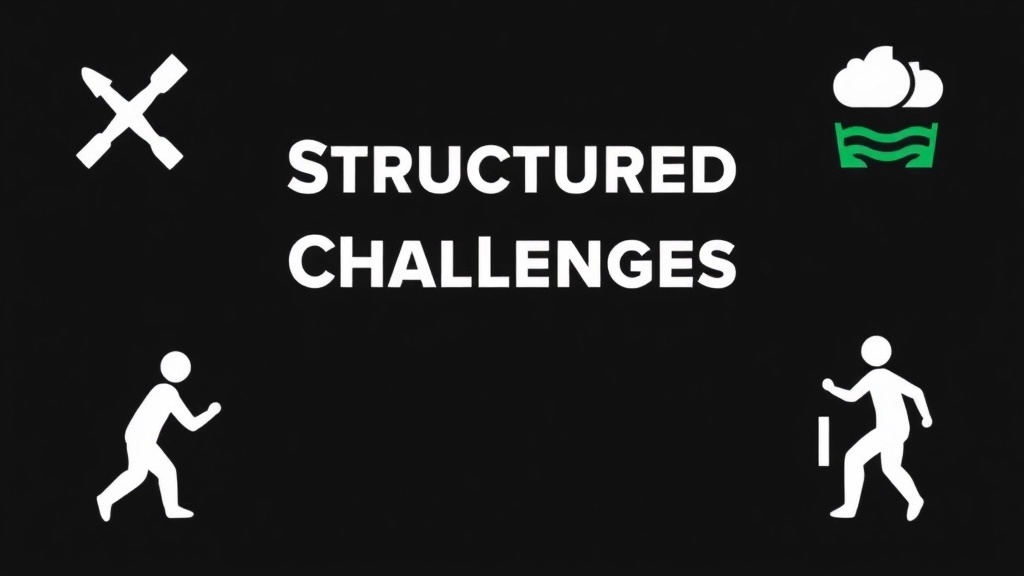
Ever wonder how to get kids truly engaged and working together?
Structured team challenges or competitions are the answer.
Let’s dive into why these activities are a game-changer.
Why Team Challenges?
Kids love a bit of friendly competition.
But it’s more than just fun.
Team challenges:
- Build teamwork and communication skills
- Encourage problem-solving and creative thinking
- Boost self-confidence and leadership abilities
Types of Challenges
We mix it up to keep things fresh and exciting.
Here’s a quick list of what we offer:
- Scavenger Hunts: Kids search for clues and solve puzzles.
- Relay Races: Fast-paced and full of energy.
- Building Challenges: Using limited materials to create something awesome.
- Trivia Competitions: Test their knowledge in a fun way.
Real Stories, Real Impact
I remember last summer, we had a group of kids who were shy and reserved.
We threw them into a building challenge.
By the end of the day, they were high-fiving and cheering each other on.
That’s the power of team challenges.
How We Structure It
Each challenge is carefully planned.
We balance difficulty and fun to keep everyone engaged.
Here’s the blueprint:
- Introduction: Explain the rules and objectives.
- Team Formation: Group kids by mixed abilities.
- Challenge Time: Let them dive in and figure things out.
- Debrief: Discuss what worked and what didn’t.
Tips for Success
Want to make sure your team challenges hit the mark?
Here are some pointers:
- Keep the instructions clear and simple.
- Ensure each team has a mix of skills.
- Rotate team members to build new friendships.
- Always have a backup plan if something doesn’t work out.
Lunch Break and Free Time for Relaxation
Alright, let’s talk about the part of the camp day everyone looks forward to: lunch break and free time for relaxation. How often have you seen kids just dragging by mid-day, hungry and tired? Yeah, it’s a common worry for parents and camp organisers alike. So, we make sure this part of the day is a game-changer.
Why Lunch Break is Crucial
First off, let’s be real: kids need fuel. By the time lunchtime rolls around, they’ve already burnt off a ton of energy with morning activities. A well-balanced lunch isn’t just about filling stomachs; it’s about recharging their batteries for the rest of the day.
Here’s what we focus on:
- Nutritious Meals: Think balanced portions of protein, carbs, and veggies. No junk food here.
- Hydration: Plenty of water and maybe some fruit juices. Dehydration is a no-go.
- Comfortable Eating Spaces: Shady spots or indoor areas where kids can chill and enjoy their food.
Free Time: Why It Matters
After lunch, it’s not just about jumping back into activities. Kids need downtime. This is their moment to unwind, chat with friends, or just sit quietly. It’s like hitting the reset button.
What we offer during free time:
- Relaxation Zones: Areas with bean bags, picnic blankets, or even hammocks if we can swing it.
- Quiet Corners: For those who want to read a book or draw.
- Social Spots: For kids who want to hang out and play informal games.
Real-Life Example: The Magic of Free Time
I remember this one time, a camper named Jake was super shy and didn’t really engage much during structured activities. But during free time, he found a group of kids who loved reading comic books just as much as he did. By the end of the week, he was more confident and even led a comic book discussion during one of our creative workshops.
Tips for a Successful Lunch and Relaxation Break
- Keep it Simple: Don’t overcomplicate the menu. Kids appreciate familiar foods.
- Monitor Allergies: Always be aware of any dietary restrictions or allergies.
- Encourage Hydration: Make water breaks a routine.
- Provide Options: Some kids might want to run around, while others might need quiet time. Cater to both.
For more information on how to keep your camper cool and hydrated, check out our top tips. If you’re looking for a comprehensive guide to summer camps, don’t miss our ultimate guide.
Afternoon Educational Sessions (Nature Walks, STEM)
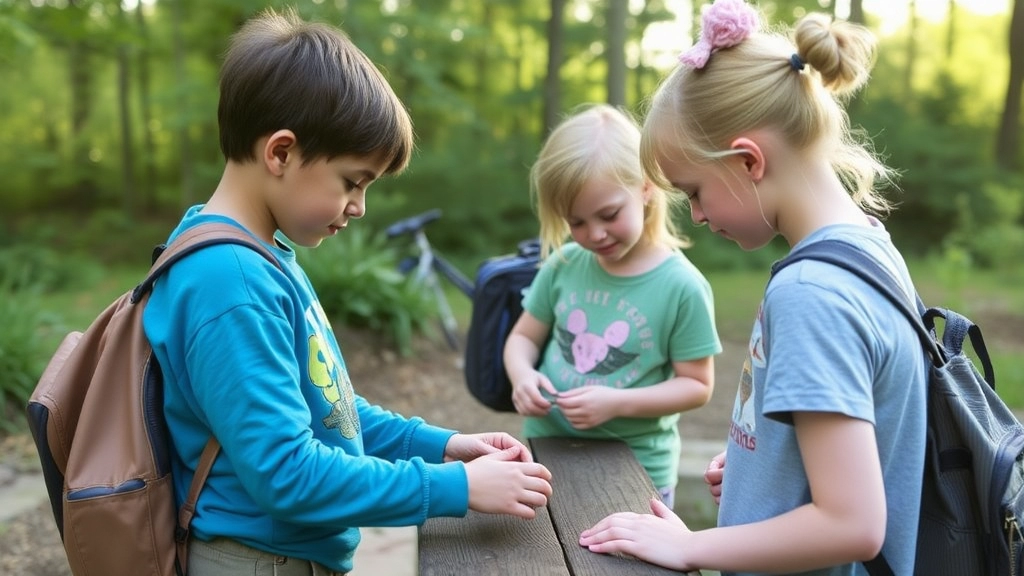
Ever wondered how to keep kids engaged after lunch?
We’ve all been there.
The post-lunch slump is real, and it’s tough to keep the energy up.
But here’s the secret: Afternoon Educational Sessions.
Why Nature Walks?
Kids love exploring.
Nature walks aren’t just about trees and birds.
They’re about:
- Discovery: Spotting a rare bug or a unique plant.
- Learning: Understanding ecosystems and how nature works.
- Adventure: Every walk is a new journey.
Think about it.
When was the last time you saw a child bored in a forest?
STEM Activities: The Game Changer
STEM isn’t just a buzzword.
It’s the future.
And kids need to be ready.
Here’s why STEM rocks:
- Hands-On Learning: Building robots, experimenting with chemistry sets.
- Problem-Solving: Tackling real-world challenges.
- Curiosity: Encouraging kids to ask “why” and “how”.
Mixing It Up
Variety is key.
We blend nature walks with STEM sessions to keep it fresh.
A typical afternoon might look like this:
- Nature Walk: 30 minutes of exploring, observing, and noting down interesting finds.
- STEM Workshop: 30 minutes of a fun, interactive project.
Real Stories, Real Impact
I remember this one time…
We took a group of kids on a nature walk.
One of them, let’s call him Tom, found a weird-looking plant.
He was curious.
We took it back, did some research, and guess what?
Tom discovered it was a rare species!
He was thrilled.
That’s the power of combining nature and STEM.
Benefits Galore
Why do we do this?
Because it works.
- Engagement: Kids stay interested.
- Learning: They absorb more when they’re having fun.
- Teamwork: Working together on projects builds camaraderie.
Afternoon Physical Activities (Swimming, Obstacle Courses)
Alright, let’s dive into the heart-pumping part of the dayâafternoon physical activities. Now, I know what you’re thinking: “How do we keep the kids engaged and active without them getting bored or exhausted?” Trust me, I’ve been there. We’re talking about balancing fun and fitness, and making sure every camper leaves with a smile on their face and a story to tell.
Swimming: Making a Splash
Swimming is a fantastic way to get the kids moving while having a blast. But here’s the kicker: it’s not just about splashing around. We want to make sure everyone’s safe and learning something new.
- Safety First: Always have qualified lifeguards on duty. Make sure kids know the pool rules and have a quick safety briefing before they jump in.
- Skill Levels: Divide the campers by swimming ability. You don’t want beginners feeling overwhelmed or advanced swimmers getting bored.
- Fun Games: Think water polo, relay races, or even a simple game of Marco Polo. These activities not only keep the kids engaged but also build teamwork and coordination.
- Free Swim: Give them some time to just enjoy the water. Sometimes, the best part of swimming is the freedom to just float and relax.
Obstacle Courses: The Ultimate Test
Now, let’s talk about obstacle courses. These are a brilliant way to challenge the kids physically and mentally. Plus, they’re a ton of fun. Here’s how to make it work:
- Designing the Course: Mix it up with a variety of challengesâthink climbing walls, balance beams, tunnels, and rope swings. The more diverse, the better.
- Teamwork: Encourage kids to work in teams. This not only makes the activity more fun but also teaches valuable lessons in cooperation and communication.
- Safety Measures: Ensure all equipment is secure and that there’s plenty of supervision. Safety mats and helmets can prevent injuries.
- Timed Challenges: Make it a friendly competition. Time each team and see who can complete the course the fastest. Offer small prizes to keep the motivation high.
Balancing Fun and Fitness
The key to a successful afternoon of physical activities is balance. You want the kids to push their limits but also have a great time. Here are some tips to keep in mind:
- Hydration: Keep water stations nearby. Kids can get dehydrated quickly, especially when they’re active.
- Breaks: Schedule short breaks between activities. This gives the kids a chance to catch their breath and recharge.
- Encouragement: Keep the energy positive. Cheer them on, celebrate their successes, and support them through any challenges.
- Adaptability: Be ready to adapt. If a particular activity isn’t working, don’t be afraid to switch things up.
For more creative ideas on how to keep kids engaged, check out our summer camp themes and ideas for kids and if you are looking for some fun activities that don’t require any equipment, our guide on summer camp games without equipment is a must-read.
Mid-Afternoon Snack and Group Games
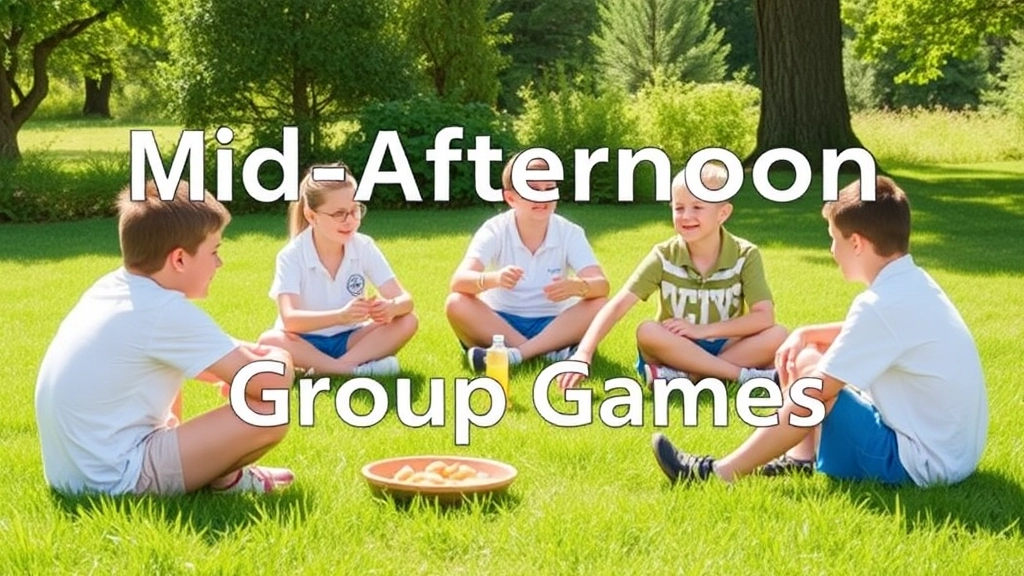
Ever wondered how to keep kids energised and engaged during the long camp day?
Yeah, me too.
Here’s the deal:
By mid-afternoon, campers are usually running low on energy.
That’s where mid-afternoon snacks come in.
And let’s not forget, the right snack can make or break the day.
Why Mid-Afternoon Snacks Matter
Snacks aren’t just about filling bellies.
They’re about recharging batteries.
Here’s why they’re crucial:
- Boost Energy: Kids need fuel to keep going.
- Improve Focus: A well-timed snack can help maintain concentration.
- Enhance Mood: No one wants a hangry camper.
Snack Ideas That Work
Now, what kind of snacks are we talking about?
Simple, healthy, and delicious:
- Fruit slices: Apples, oranges, bananas.
- Yogurt cups: Add some granola for crunch.
- Veggie sticks: Carrots, celery, with a bit of hummus.
- Whole grain crackers: Easy to grab and munch.
Transitioning to Group Games
Once everyone’s had their snack, it’s game time.
Group games are the secret sauce to building camaraderie and burning off that extra energy.
Here are a few crowd-pleasers:
- Capture the Flag: Classic, always a hit.
- Relay Races: Simple but effective.
- Duck, Duck, Goose: Perfect for younger kids.
- Scavenger Hunts: Engages both mind and body.
Making It Fun and Fair
You want everyone to have a blast, right?
Here’s how to keep it fair and fun:
- Rotate Teams: Keeps things fresh.
- Mix Ages: Older kids can mentor younger ones.
- Clear Rules: Avoid confusion and arguments.
Real-Life Example
Last summer, we had a camper named Jake.
Jake wasn’t the most athletic kid, but during a scavenger hunt, he found the golden egg.
He became the hero of the day.
And guess what?
He came out of his shell and made new friends.
That’s the power of a good snack and a great game.
Wrapping It Up
So, there you have it.
Mid-afternoon snacks and group games aren’t just fillers.
They’re essential for keeping the energy high and the spirits higher.
Next time you’re planning a camp day, remember:
A well-fed camper is a happy camper.
And a happy camper is an engaged camper.
End-of-Day Reflection and Clean-Up
Ever wondered how to wrap up a day at camp on a high note? I get itâkeeping kids engaged and ensuring they leave with a sense of accomplishment can be tricky. But trust me, end-of-day reflection and clean-up can be a game-changer. Let’s dive into how you can nail this part of the day.
Why Reflection Matters
First off, why bother with reflection? Simple. It helps kids process what they’ve learned and experienced. Plus, it’s a fantastic way to build a sense of community.
- Boosts Retention: Kids remember more when they talk about their day.
- Encourages Sharing: They get to hear different perspectives.
- Builds Confidence: Speaking up in a group can be empowering.
How to Do It Right
Now, here’s how to make it work. Keep it straightforward and engaging. No need for a formal sit-down session. Think of it like a casual chat over coffee.
- Gather Around: Get everyone in a circle. It’s more intimate and inclusive.
- Prompt Questions: Ask open-ended questions like:
- “What was the best part of your day?”
- “Did you learn something new?”
- “Any funny or surprising moments?”
- Share Stories: Encourage kids to share stories and experiences. Maybe even throw in a quick anecdote from your own day.
- Highlight Achievements: Recognize any standout moments or accomplishments. It could be anything from winning a game to helping a friend.
Clean-Up Time
Alright, let’s talk clean-up. It’s not just about tidying up; it’s about teaching responsibility and teamwork.
- Assign Tasks: Break down the clean-up into manageable tasks. Assign roles like:
- Trash Patrol: Picking up litter.
- Equipment Managers: Putting away sports gear.
- Art Guardians: Tidying up the creative workshop area.
- Make It Fun: Turn it into a game. Who can pick up the most litter? Who can organize the art supplies the fastest?
- Lead by Example: Roll up your sleeves and get involved. Kids are more likely to pitch in if they see you doing it.
Wrapping Up
Finally, bring everyone back together. Reflect on the clean-up process. Did they work well as a team? Any challenges? This not only reinforces the importance of teamwork but also gives them a sense of closure.
For more tips on making camp a memorable experience, check out our guide on the average price of summer camps and our top summer camp field trip ideas for 2024.
Camper Pickup and Optional Extended Care
So, the day’s winding down, and you’re probably wondering, “How does camper pickup work? What if I can’t make it on time?”
No worries, we’ve got you covered.
Camper Pickup Process
First things first, let’s talk about the pickup process.
It’s straightforward and stress-free.
- Designated Pickup Time: Our official pickup window is from 4:00 PM to 5:00 PM.
- Safety First: We have a secure system to ensure every camper leaves with the right person. You’ll need to show an ID and sign out your camper.
- Signs and Staff: Clear signs and friendly staff will guide you to the pickup area.
What If You’re Running Late?
Life happens. Sometimes you can’t make it by 5:00 PM.
No big deal.
We offer Optional Extended Care for situations like this.
Extended Care Details
- Hours: Extended care runs from 5:00 PM to 6:30 PM.
- Activities: Your camper won’t just be waiting around. We’ve got a bunch of low-key activities lined upâthink board games, story time, and chill-out zones.
- Cost: There’s a small fee for extended care. Check our website or ask our staff for the exact rates.
Why Choose Extended Care?
- Peace of Mind: You won’t have to rush through traffic or cut meetings short.
- Happy Campers: Kids get more time to bond with friends and wind down from the day’s excitement.
- Convenience: It’s hassle-free and ensures your child is in a safe, engaging environment until you arrive.
Real Talk: Common Concerns
“Will my child be bored during extended care?”
Absolutely not.
We’ve designed it to be a relaxed yet engaging time.
“Is it safe?”
Yes, 100%.
We maintain the same high standards for safety and supervision as we do throughout the day.
Got more questions?
Feel free to ask our staff or check out our complete guide to summer camp on the website.
We’re here to help. If you’re looking for more details about the activities available during extended care, you might find our summer camp activity ideas useful.
FAQs: Summer Camp Day Schedule
How are campers grouped for activities?
Campers are grouped by age and activity interests to ensure they are engaged and having fun. Age groups are typically split into 6-8 years, 9-11 years, and 12-14 years. We also consider their interests such as sports, arts and crafts, drama, and music.
Why is grouping by age and interest important?
Grouping by age and interest ensures that activities are appropriate for each camper’s developmental stage and personal preferences. This helps prevent situations where younger kids might feel left out or older kids might find activities too simple.
What kind of mid-morning snacks are provided?
Snacks are nutritious, easy to eat, and kid-friendly. Common options include fruits, nuts, and whole-grain bars. We avoid sugary snacks to prevent energy crashes.
Why is a mid-morning snack break important?
A mid-morning snack helps to recharge energy levels after morning activities and provides a chance for kids to socialize, make new friends, and build connections.
What types of team challenges or competitions are offered?
We offer a variety of team challenges such as scavenger hunts, relay races, building challenges, and trivia competitions. These activities help build teamwork, communication, problem-solving, and leadership skills.
How are team challenges structured?
Each challenge is carefully planned with a balance of difficulty and fun. The structure usually includes an introduction, team formation, challenge time, and a debrief session to discuss what worked and what didn’t.
What are afternoon educational sessions?
Afternoon educational sessions include nature walks and STEM activities. These sessions help keep kids engaged and learning after lunch by exploring nature and tackling hands-on STEM projects.
Why are nature walks beneficial?
Nature walks offer opportunities for discovery, learning, and adventure. They help kids understand ecosystems, spot unique plants and animals, and enjoy the outdoors.
What kind of STEM activities are included?
STEM activities include building robots, experimenting with chemistry sets, and solving real-world challenges. These activities foster hands-on learning, problem-solving, and curiosity.
What is the purpose of a mid-afternoon snack?
A mid-afternoon snack helps to boost energy, improve focus, and enhance mood. Common snacks include fruit slices, yogurt cups, veggie sticks, and whole grain crackers.
What types of group games are played in the afternoon?
Group games like Capture the Flag, relay races, Duck, Duck, Goose, and scavenger hunts are played to build camaraderie and burn off energy.
How do you ensure group games are fun and fair?
We rotate teams, mix ages, and set clear rules to keep games fair and engaging for all campers.
Can kids switch groups if they change their interests?
Yes, flexibility is key. We allow kids to switch groups if they decide they want to try a different activity.
References
-
Grouping Campers by Age and Activity Interests
-
Mid-Morning Snack and Socialising Break
-
Structured Team Challenges or Competitions

